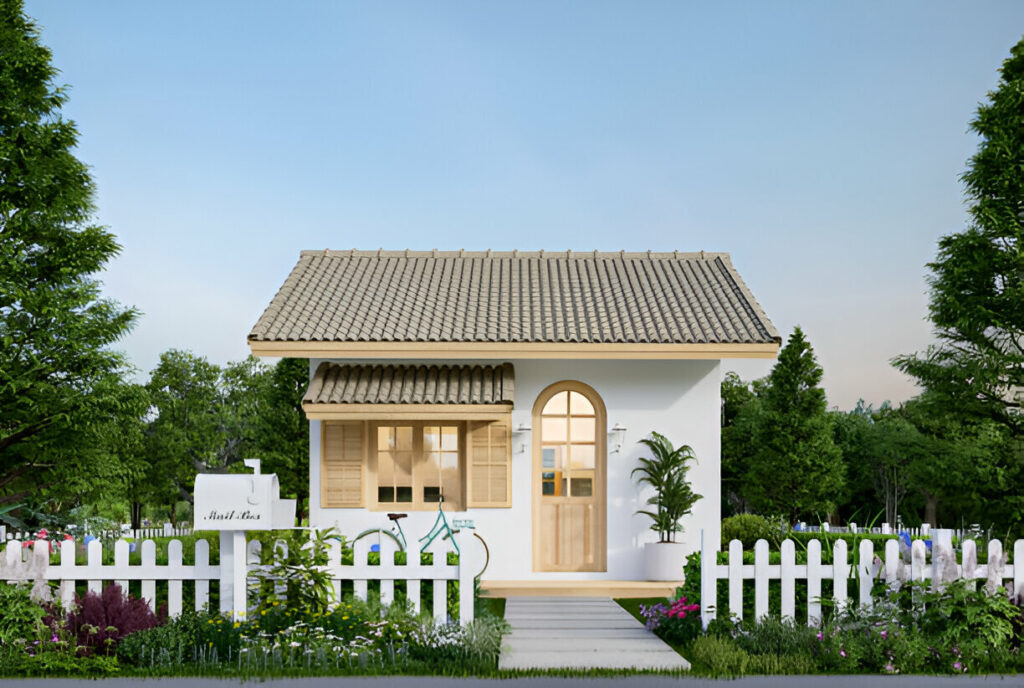In recent years, the concept of tiny house living has gained significant popularity, especially among those seeking a more sustainable and minimalist lifestyle. Tiny houses, typically defined as dwellings with a floor area of less than 500 square feet, offer a unique combination of environmental benefits, cost savings, and a simplified way of living. This essay explores the benefits of living in a tiny house, focusing on its sustainability and minimalism.
Sustainability: Eco-Friendly Living
One of the most significant advantages of tiny house living is its environmental sustainability. Tiny houses are inherently eco-friendly due to their reduced size and resource requirements. Here are some key ways in which tiny houses contribute to sustainability:
- Reduced Carbon Footprint:
- The construction of tiny houses requires fewer materials and less energy compared to traditional houses. This results in a lower carbon footprint during the building process.
- Tiny houses are often equipped with energy-efficient appliances and systems, further reducing their environmental impact.
- Energy Efficiency:
- Due to their small size, tiny houses require less energy for heating, cooling, and lighting. This can lead to significant savings on utility bills and a reduced reliance on non-renewable energy sources.
- Water Conservation:
- With limited space, tiny house residents are often more mindful of water usage. This can lead to adopting water-saving practices and technologies, such as composting toilets and rainwater harvesting systems.
- Waste Reduction:
- The compact nature of tiny houses encourages residents to adopt a minimalist lifestyle, reducing waste and promoting recycling. Many tiny house communities also emphasize composting and zero-waste living.
Minimalism: Embracing a Simpler Lifestyle
Minimalism is at the heart of the tiny house movement. By choosing to live in a tiny house, individuals are forced to reevaluate their consumption habits and prioritize what truly adds value to their lives. This shift towards minimalism offers several benefits:
- Clutter-Free Living:
- Living in a tiny house requires a significant reduction in possessions. This leads to a clutter-free living environment, which can reduce stress and improve mental clarity.
- Intentional Spending:
- The limited space in a tiny house encourages residents to be more intentional about their purchases. This often results in a shift towards buying fewer, higher-quality items and reducing impulse buying.
- Focus on Experiences:
- Minimalism in a tiny house setting often leads to a greater emphasis on experiences rather than material possessions. This can foster personal growth, creativity, and a deeper connection to community and nature.
- Improved Organization:
- The small space of a tiny house necessitates creative storage solutions and a well-organized living area. This can lead to greater efficiency and ease of daily living.
Cost Efficiency: Financial Sustainability
In addition to environmental and lifestyle benefits, tiny house living offers significant financial advantages. The reduced size of tiny houses leads to lower construction and maintenance costs, making homeownership more accessible. Here are some financial benefits of tiny house living:
- Lower Construction Costs:
- Building a tiny house is generally less expensive than building a traditional house. The smaller size requires fewer materials and less labor, reducing overall construction costs.
- Reduced Utility Bills:
- The energy-efficient design of tiny houses leads to lower utility bills. This can result in significant savings over time, especially for those who prioritize renewable energy sources.
- Affordable Housing Option:
- For many people, especially first-time homebuyers or those with limited income, tiny houses provide an affordable entry into homeownership. This can be particularly beneficial in areas with high housing costs.
- Mobility and Flexibility:
- Many tiny houses are built on wheels, offering the flexibility to move locations as needed. This can be advantageous for those who need to relocate for work, travel, or personal reasons, potentially saving on rent or property taxes.
Community and Lifestyle Benefits
The tiny house community is known for its strong sense of camaraderie and shared values. Many tiny house residents join communities where they can share ideas, resources, and support. This sense of belonging can enhance the overall tiny house living experience.
Additionally, the lifestyle associated with tiny house living often encourages a closer connection to nature and a more active lifestyle. The compact size of the home may lead to spending more time outdoors, engaging in activities such as gardening, walking, or biking.
Challenges of Tiny House Living
While tiny house living offers numerous benefits, it is not without its challenges. One of the main drawbacks is the limited space, which can be particularly challenging for families or those with extensive possessions. Additionally, tiny houses may face zoning restrictions in some areas, limiting where they can be placed.
Living in close quarters can also lead to relational stress, especially in households with multiple occupants. Furthermore, the inability to accommodate large gatherings or entertain guests in a traditional manner may be a drawback for some.
Despite these challenges, many tiny house residents find the benefits of sustainability, minimalism, and cost efficiency to outweigh the drawbacks. With careful planning and a willingness to embrace a simpler lifestyle, tiny house living can be a highly rewarding and fulfilling choice.
Conclusion
In conclusion, living in a tiny house offers a unique combination of sustainability, minimalism, and financial benefits that make it an attractive option for many. By reducing their environmental impact, embracing a clutter-free lifestyle, and enjoying significant cost savings, tiny house residents can experience a more intentional and fulfilling way of living. While challenges exist, the advantages of tiny house living make it a compelling choice for those seeking a more eco-friendly and minimalist lifestyle.


